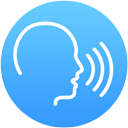







Research shows that as many as 20% of all traffic accidents are caused by fatigue (tiredness).
The most common type of traffic accidents due to fatigue are single-car accidents. 40% of all single-car accidents happen in darkness or at dawn, and many of these are likely due to fatigue.
Fatigue and alcohol are considered the single highest factors that cause traffic accidents.
 About 20% of all traffic accidents are caused by drivers who are too tired to be driving
About 20% of all traffic accidents are caused by drivers who are too tired to be driving
The effects of fatigue are very powerful and can be devastating when combined with driving. For example, your reaction time will be just as poor after 24 hours without sleep as with 0.8 per mille alcohol in the blood. For this reason driving when fatigued is prohibited and the law equates causing an accident while driving fatigued with causing an accident while driving under the influence of alcohol or drugs.
"Vehicles must not be driven by anyone who, due to illness, fatigue, the influence of alcohol, other stimulating or anaesthetic substances or for other reasons, cannot drive the vehicle in a safe manner." –Trafikförordningen ch. 3, § 1
Fatigue impairs your:
 Driving when fatigued is prohibited
Driving when fatigued is prohibited
Only you know exactly which signs of fatigue you experience when you are starting to get tired, and at what point you experience them, but you probably recognize most of these listed below:
 It is important to recognize and listen to your body's signs of fatigue
It is important to recognize and listen to your body's signs of fatigue
As soon as you experience the early signs of fatigue you must consider whether it is appropriate to continue driving. If, however, you experience the later, even stronger, signs you must stop the car as soon as possible as you at risk of suddenly falling asleep, no matter how hard you try to stay awake. You must learn to interpret your body's signs of fatigue and respect them.
Pay special attention to your body's signs of fatigue when driving at night, in the dark and when you start getting close to your destination.
The risk of falling asleep behind the wheel is highest late at night and early in the morning, especially between 03:00-05:00. At this time body functions are reduced –metabolic activity, body temperature and blood pressure all drop to their lowest levels of the day.
Risk is also heightened during the last stretch of a journey, as we tend to relax when we are getting close to our destination. This is especially true if we are on our way home. When driving on familiar roads it is easy to feel a false sense of security.
Alcohol makes us both tired and less attentive to signs of fatigue. Therefore, it is common that fatigue-based accidents are caused by drunk drivers.
 The highest risk of falling asleep while driving is between 03:00-05:00
The highest risk of falling asleep while driving is between 03:00-05:00
Driving long distances without resting also increases the risk of fatigue, no matter what time of day you drive. The risk is especially great if the driving is monotonous and does not require your full attention – for example if you drive on a motorway with little or no traffic.
Monotonous noise from the car's tyres and engine also increases the risk of fatigue.
Fatigue is one of the biggest causes of fatal accidents on motorways.
Microsleep is a brief, involuntary episode of sleep that is generally caused by a lack of sleep, often combined with a repetitive monotonous task such as watching TV or driving. On the couch in front of the TV, microsleep is harmless, but behind the wheel it can be devastating.
At best, the light from an oncoming vehicle or the sound of a rumble strip can awaken a microsleeping driver. In the worst case, it's a head-on collision...
While driving, if you allow yourself to become so tired that you actually nod off behind the wheel – even for a fraction of a second – you must stop the car as soon as possible and refrain from driving until it is safe to do so again.
If you do not stop, but keep driving while trying to fight the fatigue, you risk not only microsleeping again, but also falling into a deep sleep and driving off the road or into something or someone.
 Accidents caused by drivers falling asleep behind the wheel and driving off the road, or into an oncoming vehicle, are unfortunately too common
Accidents caused by drivers falling asleep behind the wheel and driving off the road, or into an oncoming vehicle, are unfortunately too common
There are a number of preventive measures you can take in order to decrease the risk of becoming tired while driving.
If you're too tired to drive, despite taking the appropriate preventive measures, then you should not drive. It is as simple as that. If you feel fatigue creeping up on you, then you must to stop and rest.
 If you are too tired to drive you must stop and get some sleep before driving again
If you are too tired to drive you must stop and get some sleep before driving again
The most effective method of countering temporary fatigue is to take a nap for about 20 minutes. If you sleep for more than 30 minutes you go into deep sleep and might wake up feeling groggy and disorientated. Combining the nap with a short walk and a cup of coffee might also help, but on their own these give no long-lasting effect.
If you feel more alert and continue driving after taking a nap you must pay even more attention to any signs of fatigue. Once you have started to feel fatigued, the risk of it happening again is high.